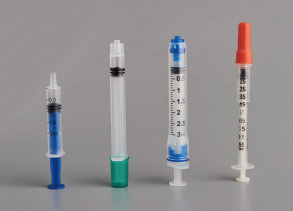

The disposable syringe assembly is essentially a plasti […]
The disposable syringe assembly is essentially a plastic syringe assembly which holds one or several doses of medicine (or other drug). Disposable syringe assembly are generally made of plastic, but they can also be crafted out of metal, glass or ceramic. This is why, when shopping for the right syringe assembly, you should ensure that it is specifically manufactured for the purpose of being used in medical processes, such as injection of medicines into the body. In addition to this, ensure that the syringe assembly which you are opting to buy is capable of handling various sizes of needles and so on. The disposable syringe assembly has now become a common fixture in the surgical laboratories. It is due to the varied requirements that the syringe assembly has been crafted to cater.
The needle, upon insertion into the patient's body, injects the medicine into the various parts of the body, be it the neck, armpits, hands or feet. Since the syringe is easily visible through the top of the glass tube or the transparent plastic top, the process is known as instant injection.
An analysis of the plunger and the handle shows that both are of similar sizes. Hence, it can be concluded that the plunger and the handle used for preparing the disposable syringe assembly are of same size. To check whether the plunger and the handle are of same size, just look at the outline of the shell of the syringe with your pencil. The outline of the shell will be of the same size as the plunger tip, which is also of the same size. Hence, the size difference between plunger and handle is merely on the surface of the shell.
Now, let us see how the syringe assembly punctures the outer surface of the glass tube 10. To do this, the syringe will be inserted into the syringe gun. Once the syringe has been inserted, hold the other end of the nozzle to push the needle outwards. At the same time, the other end of the nozzle should be pushed back to a point where it pierces the glass tube. This should be done repeatedly until the hole is pierced and the syringe is empty.
The design relating to the needle should be noted. The shape of the needle does not necessarily have any relation to the plunger size. In other words, a large or small hole may be pierced without restricting the needle to the size of the hole. However, if you are using a plastic model, you would want to make sure that the design of the syringe body matches the shape of the handle so that the needle does not get trapped. If you do not have a finger grip, or if the design of the disposable syringe assembly requires a finger grip, you would need to cut the hole.
 https://www.syringeassemblymachines.com/
https://www.syringeassemblymachines.com/